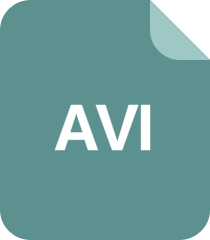
毕 业 设 计 (论 文 )
动 画 门 户 网 站 设 计 与 实 现
姓 名
学 号
年 级
专 业
系(院)
指导教师
2017 年 2 月 27 日

动 画 门 户 网 站
摘 要
在线互联网的发展,促进了当今视频影视信息的发展,也方便了人们对于互联网的了
解更加深入,通过互联网,很多人可以观看自己喜欢的电影,动画片,也能选择喜欢的视
频进行播放。视频的播放,让动画片能够在网上就可以呈现出来,增加了用户的友好度,
也帮助喜欢动画片的人可以在网上就能看到喜欢的动画,方便了动漫爱好者,也可以让动
漫爱好者在网上就可以对动画片进行一个评价评论。
本人在大学期间学习了 java 编程技术,是关于 web 开发的,采用的是 BS 架构的
模式开发。所以本系统的开发我们尝试使用 jsp 进行技术点设计,利用 mysql 数据库进行
数据库的设计和管理。通过动漫门户网的建设,让每一个动漫爱好者都能在业余生活中找
到一个可以共同探讨动漫、研究动漫的系统。本文理论结合实际,通过理论知识的讲解,
实际的操作,来建立了一款动漫网站,通过动漫网站的建立,可以让人们能够在网上就可
以找到喜欢的动漫,动画片。论文采用了以往的写作方式,首先通过需求分析,需求调研,
确定相应的功能,然后进行系统的详细的数据库的设计,数据库设计完成后,就对 ER 图,
系统流程图等进行设计,最后进行系统的详细设计,通过系统的详细设计,就完成了系统
的整体功能和设计。
本网上动漫系统是运用 JSP 技术来实现的,采用了 myeclipse 进行开发工具。其
主要功能有:在线动漫播放,动漫信息的查找,系统的新闻发布,以及在线留言和在线评
价。论文的撰写,力求理论和实践相结合,运用理论知识搭建平台的框架,利用实际的编
程技术进行平台的详细设计。通过动漫网的建设,让动漫爱好者可以找到自己的归宿。
�
关键词:动漫网;BS 架构;JSP 编程;mysql 数据库

动 画 门 户 网 站
Abstract
The development of Internet, promote the development of today's video and TV information,
but also facilitate people to understand the Internet more deeply, through the Internet, many
people can watch their love movies, cartoons, can choose love video playback. The video player,
can let cartoons will be shown on the Internet, increased user friendliness, but also help people
can see love love cartoon animation on the Internet can facilitate the animation enthusiasts, also
can make the animation enthusiasts on the Internet can make a comment on the evaluation of
animation film.
I studied in the University of Java programming technology, is on the development of
web, using the BS architecture model development. Therefore, the development of the system
we try to use JSP for technical point design, the use of MySQL database design and management
of the database. Through the construction of the animation portal network, so that each
animation lovers can find a way to explore the animation, animation system. This thesis
combines theory with practice, through theoretical knowledge, practical operation, to establish a
website, through the establishment of the animation site, can let people on the Internet can find
love animation, cartoon. The traditional way of writing, first through the demand analysis,
demand research, determine the corresponding function, then designing the system with the
database, the database design is completed, the ER diagram, design the system flow chart, the
system detailed design, the detailed design of the system, complete the overall design and
function of the system.
The online animation system is the use of JSP technology to achieve the use of
MyEclipse development tools. Its main functions are: online animation playback, animation
information search, news release system, as well as online message and online evaluation. Thesis
writing, and strive to combine theory and practice, the use of theoretical knowledge to build the
framework of the platform, the use of practical programming technology for the detailed design
of the platform. Through the construction of animation network, so that animation enthusiasts
can find their own home.
Key words: cartoon network; BS architecture; JSP programming; MySQL database

动 画 门 户 网 站
目 录
摘 要...........................................................................................................................................................II
Abstract...............................................................................................................................................................III
目 录 .........................................................................................................................................................IV
前 言 ...........................................................................................................................................................1
第 1 章 绪论 ...........................................................................................................................................2
1.1 选题背景 ---------------------------------------------------------2
1.2 课题意义 ---------------------------------------------------------2
1.3 主要研究方向 -----------------------------------------------------2
第 2 章 开发工具介绍 ...........................................................................................................................2
2.1 开发系统所用工具 -------------------------------------------------2
2.1.1 开发语言和工具 -------------------------------------------------2
2.1.2 基于 B/S 结构开发 -----------------------------------------------2
2.1.3 JAVA 语言简介 ---------------------------------------------------3
2.1.4 JSP 技术 --------------------------------------------------------3
2.1.5 Tomcat ---------------------------------------------------------3
2.1.6 MySQL 数据库 ----------------------------------------------------3
2.1.7 My Eclipse 平台 -------------------------------------------------4
2.1.8 软硬件需求 -----------------------------------------------------4
第 3 章 系统需求分析 ...........................................................................................................................5
3.1 用户需求 ---------------------------------------------------------5
3.1.1 系统功能需求 ---------------------------------------------------5
3.1.2 用户端属性 -----------------------------------------------------5
3.1.3 运行环境 -------------------------------------------------------5
3.1.4 性能需求 -------------------------------------------------------5
3.1.5 软件属性需求 ---------------------------------------------------5
3.2 系统总体设计 -----------------------------------------------------6
3.2.1 系统设计思想 ---------------------------------------------------6
3.2.2 系统模块 -------------------------------------------------------6
1. 用户管理模块: ...................................................................................................................................6
2. 动漫管理模块: ...................................................................................................................................6
3. 其他模块: ...........................................................................................................................................7
3.2.3 可行性分析 -----------------------------------------------------7
(1)技术的可行性 ------------------------------------------------------7
(2)经济的可行性 ------------------------------------------------------7
(3)操作可行性 --------------------------------------------------------7
(4)法律的可行性 ------------------------------------------------------7
3.3 本章小节 ---------------------------------------------------------8
第 4 章 数据库设计 ...............................................................................................................................9
4.1 概念结构设计 -----------------------------------------------------9
4.2 逻辑结构设计 ----------------------------------------------------10
Liuyanban 表 ......................................................................................................................................................10
leibie 表 ............................................................................................................................................................10

动 画 门 户 网 站
shipinxinxi 表 ..................................................................................................................................................10
4.3 本章小节 --------------------------------------------------------11
第 5 章 系统详细设计 .........................................................................................................................12
5.1 系统模块设计总体思想 --------------------------------------------12
5.2 系统模块管理简介 ------------------------------------------------12
5.2.1 系统首页 ------------------------------------------------------12
5.2.2 动漫播放模块 --------------------------------------------------12
5.2.3 在线留言 ------------------------------------------------------13
5.2.4 管理员登陆 ----------------------------------------------------14
5.2.5 管理员主界面 --------------------------------------------------14
5.2.6 站内新闻管理 --------------------------------------------------15
5.2.7 注册用户管理 --------------------------------------------------15
5.2.8 动画片管理 ----------------------------------------------------16
结 论 .................................................................................................................................................................17
致 谢 .............................................................................................................................................................18
参考文献 .............................................................................................................................................................19


















